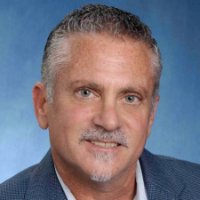Thursday, March 1
11:45 a.m.
Larsen 310“Full-Spectrum Microwave Signal Processing”
Dr. Richard DeSalvo is Senior Scientist, Photonics & Materials Sciences Department, Harris Corporation
Abstract
We review recent advances in microwave photonic systems for wideband spectrum awareness; frequency conversion; and high data-rate, millimeter wave relays.
Biography
Dr. Richard DeSalvo is a Senior Scientist in the Photonics & Materials Sciences Department within Harris Corporation’s Space and Intelligence Systems. He leads Harris Research and Innovation Projects and Development Programs in Coherent RF Photonics, optical-wireless and lightwave communication systems that are extending system operating frequencies out beyond 100 GHz. Richard’s group is currently working on: Ultra-wideband coherent photonic front-ends for frequency agile RF systems, All-optical signal processing, Digital signal processing for analog photonic sub-systems, and Digital signal processing in coherent communication systems. Key product developments include the ultra-wideband frequency down-converter that shifts mmW signals down to a convenient, lower intermediate frequency that can be directly digitized with a user-defined analog-to-digital converter; and the complementary photonic frequency up-converter used to synthesize low phase noise carriers out to 100 GHz.
Richard received his BS in Physics from Jacksonville University and his PhD in Physics from UCF/CREOL.
Dr. DeSalvo has published over 30 refereed journal publications, invited articles and conference proceedings and has 21 US patents in the fields of telecommunications, RF photonics, and biophysics. He has an h-index of 15 and an i10-index of 27. Richard is a member of the OSA, AAAS, Senior Member of the IEEE and was appointed the position of Graduate Faculty Scholar in the College of Graduate Studies at the University of Central Florida in 2009 and Adjunct Professor in the School of Electrical and Computer Engineering at Georgia Tech in 2013.


